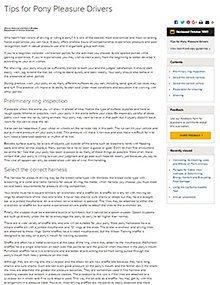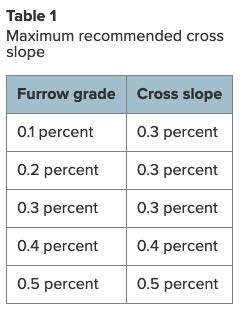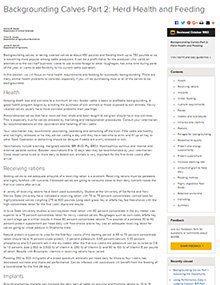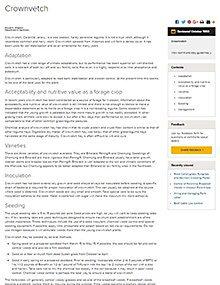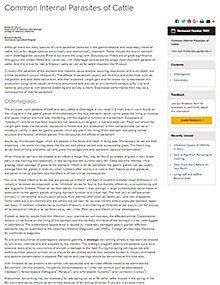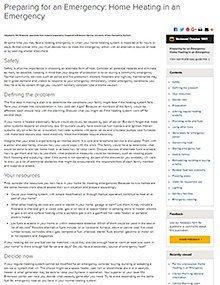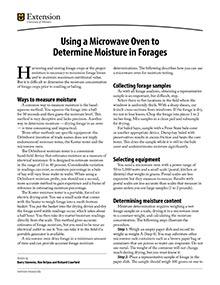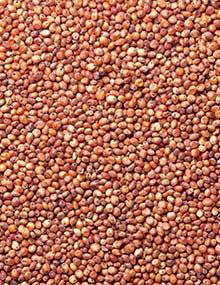Establishing Birdsfoot Trefoil in Bluegrass Sod
Reviewed
Birdsfoot trefoil and Kentucky bluegrass will produce three times as much beef as unimproved bluegrass. Even heavily fertilized bluegrass will produce only 65 percent as much animal product as trefoil-bluegrass combination. See Table 1.
Tips for Pony Pleasure Drivers
Reviewed
Who hasn't had visions of driving or riding a pony? It is one of the easiest, most economical and most rewarding horse experiences you can have. A pony offers endless hours of companionship, experience, pleasure and peer recognition, both in casual pleasure use and in organized group activities.
Soybean Variety Selection
Reviewed
No one has yet developed a simple answer to the question of how to choose the best variety of soybean to grow, but it is the intent of this publication to present guidelines for choosing a variety for a given set of conditions.

Radon: An Indoor Health Hazard?
Reviewed
Indoor air can be polluted in a number of ways. Indoor pollutants include formaldehyde, carbon monoxide, respirable dust, nitrogen dioxide, radon and other gases. This guide focuses on just one of these pollutants — radon.

Analyzing Cropping Systems
Reviewed
Land Grading for Irrigation: Design and Construction
Reviewed
Land grading is used for irrigation and subsequent drainage. Visit our site for our Land Grading for Irrigation: Design and Construction guide.
Backgrounding Calves Part 2: Herd Health and Feeding
Reviewed
A good health program is critical to successful calf backgrounding. Visit our website today to learn more about backgrounding calves.
Crownvetch
Reviewed
Crownvetch, Coronilla varia L., is a cool season, hardy, perennial legume. It is not a true vetch, although it resembles common and hairy vetch. Crownvetch spreads from rhizomes and will form a dense cover. It has been used for soil stabilization and as an ornamental for many years.
Dehumidifiers
Reviewed
Dehumidifiers reduce the moisture in the air. They provide comfort for people and reduce or eliminate deterioration of equipment due to rust, rot, mold and mildew.

Agricultural Hand Signals
Reviewed
Voice communications are impossible in certain agricultural situations due to distance and noise. For this reason, standard Agricultural Hand Signals have been developed for farm machinery operators by the American Society of Agricultural Engineers. Hand signals can prevent accidents and save time. Use them and teach others to use them.
Sheep Pregnancy Checking by Ultrasonic Sound
Reviewed
Ultrasonic sound waves can be used to determine sheep pregnancy without harming the ewe or fetus. Learn how the procedure works and pregnancy is diagnosed in this University of Missouri Extension guide.
Selecting and Working With a Farm Building Contractor
Reviewed
Two major tasks are involved in the successful completion of a new farm building — choosing the right building and selecting a good contractor to build it.
Most buildings constructed today are "pre-engineered," or package-type, buildings.
Getting Problem Cows Pregnant
Reviewed
An average interval of 70 days from calving to first breeding and a high fertility rate are important to maximize efficiency in dairy herds. The results are more milk and calves at reduced cost.
Common Internal Parasites of Cattle
Reviewed
Feeding to Maximize Milk Solids
Reviewed
Preparing for an Emergency: Home Heating in an Emergency
Reviewed
At some time you may face a heating emergency. Visit our site for our Preparing for an Emergency: Home Heating in an Emergency guide.
How to Build a Compost Bin
Reviewed
Learn about five types of composting and how to build a composting bin. Worm and hemp composting, wire-mesh and snow-fence holding units, and wood and wire three-bin turning units are all covered in this University of Missouri Extension guide.
Home Slaughtering and Processing of Beef
Reviewed
A beef animal selected for slaughter should be healthy and in thrifty condition. Visit our site to learn about home slaughtering and processing of beef.
Using a Microwave Oven to Determine Moisture in Forages
Reviewed
Harvesting and storing forage crops at the proper moisture is necessary to minimize forage losses and to maintain maximum nutritional value. But it is difficult to determine the moisture concentration of forage crops prior to ensiling or baling.
Kitchens for Workers in Wheelchairs
Reviewed
Space for the wheelchair, plus space for turning the chair are the two important factors to consider when planning a new kitchen, remodeling a structure or adapting one being used.
The standard model wheelchair (measurements taken from American Standard specifications) falls within the following limits:
Household Hazardous Products
Reviewed
A household hazardous product is one whose use or disposal poses a threat to human health or the environment. Hazardous products should not be put in the trash, down the drain, into storm drains or burned unless you are instructed to do so by local waste authorities.
Low-Profile Bins for Grain Drying
Reviewed
Wheat Silage for Dairy Cattle
Reviewed
